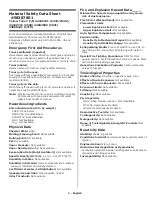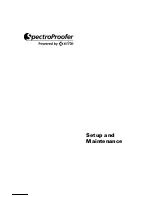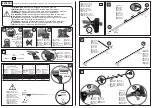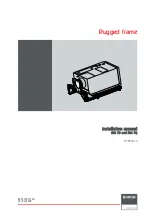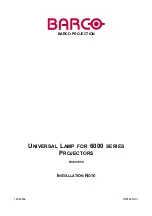
A-184
Standard Photoelectric Sensors
• Avoid wiring them together or running them within the same
duct. Doing so may get them induced, causing a malfunc-
tion or damage.
• For extension of the cable, use a 0.3-mm
2
or more cable
and run it within 50 m.
Mounting
• Install the photoelectric sensor so that the sun, fluorescent
lamp, incandescent lamp or any other strong light will not
enter the directional angle range of the sensor.
• If Sensors are installed face-to-face, ensure that no optical
axes cross each other. Otherwise, mutual interference may
result.
• Use M4 screws to mount the unit.
• When mounting the case tighten it to the torque of 1.2 Nm
max.
Miscellaneous
Operating Environment
• Avoid using the Sensor in a strong disturbance light (e.g. la-
ser beam or arc welding beam) or strong electromagnetic
field.
• Depending on their material and/or shape, some objects
may not be detected or may be detected with low accuracy.
(Mirror-smooth material, transparent material, material of
extremely low reflectivity, object smaller than spot diameter)
Correct operation
The moving direction of the sensor or object should be prefer-
ably along the optical axis of the light beam. Lateral approach
is also possible. Movement from the top to the bottom or op-
posite can cause malfunction and should be avoided.
Dimensions (Unit: mm)
Accessories (Order Separately)
Mounting Brackets
H-5
Movement of object
Light beam
Sensing distance
adjustor
Red LED (light received)
Green LED (stability)
Sensors
F3C-AL14-M1J
F3C-AL44-M1J
18
4
Three,
4.2 dia.
4
37
42
8
4.7
(55)
Emitter
Receiver
90
45
32
Distance adjuster
Light indicator (red)
Stability indicator (green)
M12 x 1
1
3
2
4
inyl-insulated round cable of 4 dia.
4 cores conductorStandard length:
200 mm
Terminal No.
Specifications
1
+V
2
L-ON/D-ON selectable
3
0V
4
Output
Note: Connection 1 to 2 is L-ON
Connection 2 to 3 is D-ON
Note. L-ON when 1-2 are connected
D-ON when 2-3 are connected
Termi-
nal No.
Specifications
1
+V
2
L-ON/D-ON
selection
3
0V
4
Output
In the interest of product improvement, specifications are subject to change without notice.
ALL DIMENSIONS SHOWN ARE IN MILLIMETERS.
To convert millimeters into inches, multiply by 0.03937. To convert grams into ounces, multiply by 0.03527.
Cat. No.
E510-E2-01-X









